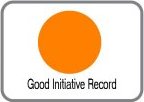Hrísheimar
Project Details |
| Title: | Hrísheimar |
| Permalink: | https://www.nabohome.org/cgi-bin/explore.pl?seq=104 |
| Abstract: | The Hrísheimar excavation is a part of the larger Landscape of settlements project. The site, dated to the Viking Age, is on the southwestern side of Mývatn, in a barren and heavily eroded area. Among other things it has extensive iron working remains and well stratified middens. |
| Country: | Iceland |
| Project Start Year: | 2001 |
| Projected End Year: | 2006 |
Account Owner |
| Contact: |
Fornleifastofnun Íslands |
| Postal Address: |
Bárugata 3, 101 Reykjavík, ICELAND |
| Post Code: |
101 |
| Telephone: |
00354-5511033 |
| Website: |
http://www.instarch.is |
| Email: |
fsi@instarch.is |
Project Content

|
Hrísheimar 2003
- Interim Report [1.67 MB]
The heavily eroded Viking Age site of Hrísheimar site is situated southeast of lake Mývatn. It had previously been surveyed and test pits showed great potential for further excavation in connection with the Landscape of settlements project. The aims of the 2003 season were a) to excavate areas that were in the process of being eroded, b) to excavate the midden and c) excavate a structure that had partially been excavated in 2001. It came as a surprise how well archaeology below the eroded surface was preserved. Iron ore processing on a large scale was identified in the western part of the now eroded homefield (area A-C), over 20 furnaces and a smithy excavated. Those deposits are dated to the 10th-11th centuries by C14. Midden layers were also excavated in area H- L and the deposit is arguably one of the richest and most important middens in N-Iceland, both in terms of its own antiquity (based on finds) and composition and in terms of its immense value for comparison with the archaeofauna from Sveigakot and Hofstaðir. A pit house was discovered under a midden in area H. It had two occupational phases but its function still remains unclear. In total just over 200 m2 were excavated.
|

|
Hrísheimar 2004
- Interim Report [0.87 MB]
In 2004 work continued in areas H (a sunken featured building) and L (midden). The aims were to fully excavate the sunken featured building, continue the midden excavations and try and obtain better understanding of its relationship to tephras present on site. The sunken featured building had two occupational phases, one related to the use and the other to its abandonment, apparent by some midden dumping. The preservation of the midden exceeded all expectations. It does not show the same faunal pattern as f.ex. Steinbogi and Sveigakot. Although no clear dating evidence based on tephra is provided in this report it is evident from finds that it dates to the Viking Age.
|

|
Preliminary Report of Animal Bones from Hrísheimur, Mývatn District, Northern Iceland (NORSEC Report 6)
In 2000 and 2001 the FSl / NABO project Landscapes of Settlement in Northern Iceland collected animal bones from the heavily eroded site of Hrísheimur south of lake Mývatn. The 2001 season produced a substantial archaeofauna from a 2 x 2 meter test excavation of a midden deposit that apparently fills a small sunken-feature structure. While further excavations are lanned to collect more material and to better understand the deposit and site as a whole, it may be useful to provide an interim overview of the bone materials recovered from the largest context (003) of the midden deposit tested in 2001. The collection totals 4,634 fragments, of which 1,596 could be identified to a useful taxonomic level. The Hrísheimur collection is made up of domestic mammals (c 74%), birds (c 12%) and fish (c 15%). The domestic mammals include substantial numbers of cattle bones, a few horse bones (some showing butchery marks), pig bones, and bones of both sheep and goat. Nearly a quarter of the domestic mammals bones are from pigs (adult, juvenile and foetal), currently the highest percentage of pig remains known from any period in Iceland. Bird remains include both bone and egg shell. All identified birds are tarmigan (grouse). Fish include both fresh water species (arctic char and trout) and marine species (Atlantic cod, haddock and saithe) which were apparently imported as cured rather than whole fish. The Hrísheimur collection shows many similarities with bone collections from the nearby site of Sveigakot across the Kraká river, and definitely derives from a full scale farm rather than a sheep station or seasonal sel. Radiocarbon assay and preliminary analysis of stratigraphy and local tephra suggest the collection probably dates from the late 9th to late 10th centuries AD.
|
Project Location
Latitude: 65.523329°N
Longitude: 17.089445°W

